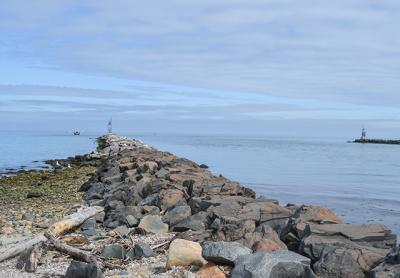Beach Project Dropped West of Inlet

East Hampton Town will work with the Army Corps of Engineers to have the Lake Montauk inlet dredged, but will drop a plan to pair that project with beach reconstruction work to the west side of the inlet, which the Corps could have done under a post-Hurricane Sandy funding program.
The Army Corps is willing to foot the bill for its preferred alternative only, a $10 million plan that would use dredged sand to build up the beach to the west of the inlet. The plan, however, also includes the installation of several groins made of sand-filled geotextile bags at intervals along the shore to contain the loose sand, and town officials balked at that idea. The groins would contravene East Hampton’s local waterfront revitalization plan, which details where such hard structures might or might not be built along the shore.
The groin proposal meets the federal agency’s standards of cost-effectiveness and “maximized net benefit,” Steve Couch of the Army Corps said at a meeting last year at which alternatives were discussed, and it would have been largely paid for by the feds. Town officials recommended instead a project that would eliminate the groins while still using dredged sand to similarly rebuild the beach. East Hampton had hoped the Corps would agree to shoulder the $21 million cost.
However, Supervisor Larry Cantwell said Tuesday, “despite the town’s effort to convince the Corps that alternative five was a good alternative, and that the Corps should pay for it, they’re not going to.” Should the town wish to proceed with that project, it would have to come up with the additional $11 million beyond the cost of the other, Corps-approved project.
Instead, Mr. Cantwell suggested pursuing only the dredging of the inlet, which would be designated not as a post-Sandy beach reconstruction effort but as a navigation aid project. The dredging would still yield sand that could be added to the beach, though not the volume that had been hoped.
“I think pursuing this as a navigation project is the way to go,” Mr. Cantwell said at a Tuesday board meeting. The inlet is “such a critical navigation point,” he said.
The most recent plan that was discussed with the Army Corps calls for dredging the inlet to a depth of 19 feet, Councilman Peter Van Scoyoc said. “This is our best opportunity to make that a safer inlet,” he said. With constant shoaling, “that east side is quite shallow . . . at times, it’s difficult for two fishing boats to pass each other. We already have some of the larger fishing boats complaining that they can’t get in or out except on a very high tide.”
